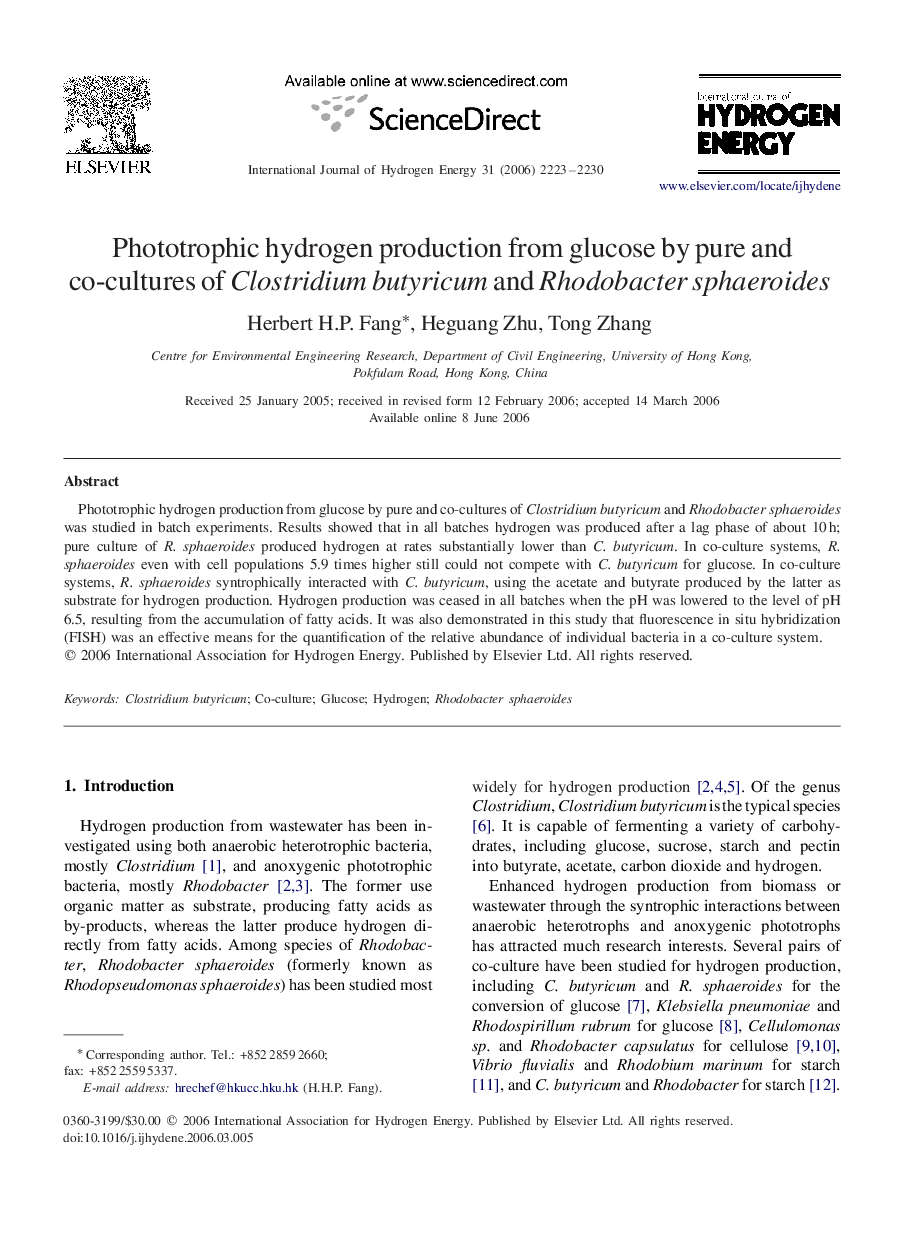| Article ID | Journal | Published Year | Pages | File Type |
|---|---|---|---|---|
| 1280391 | International Journal of Hydrogen Energy | 2006 | 8 Pages |
Phototrophic hydrogen production from glucose by pure and co-cultures of Clostridium butyricum and Rhodobacter sphaeroides was studied in batch experiments. Results showed that in all batches hydrogen was produced after a lag phase of about 10 h; pure culture of R. sphaeroides produced hydrogen at rates substantially lower than C. butyricum. In co-culture systems, R. sphaeroides even with cell populations 5.9 times higher still could not compete with C. butyricum for glucose. In co-culture systems, R. sphaeroides syntrophically interacted with C. butyricum, using the acetate and butyrate produced by the latter as substrate for hydrogen production. Hydrogen production was ceased in all batches when the pH was lowered to the level of pH 6.5, resulting from the accumulation of fatty acids. It was also demonstrated in this study that fluorescence in situ hybridization (FISH) was an effective means for the quantification of the relative abundance of individual bacteria in a co-culture system.
